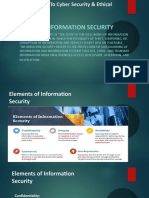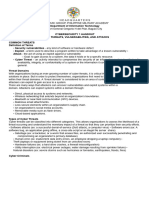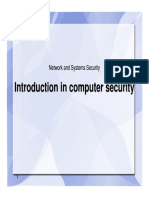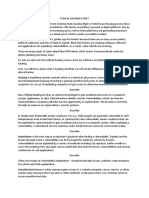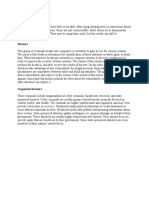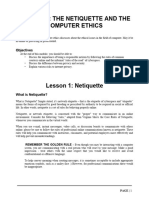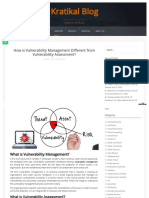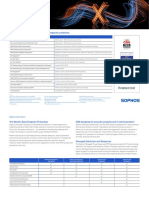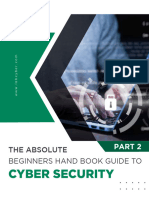0% found this document useful (0 votes)
56 views66 pagesCybersecurity Course Overview
The document discusses a course on computer security and information assurance. It provides an overview of topics covered in the course including security policies, authentication, access control, and common attack and defense methods. It also outlines the intended learning outcomes, course schedule, and importance of cyber security.
Uploaded by
MarvinCopyright
© © All Rights Reserved
We take content rights seriously. If you suspect this is your content, claim it here.
Available Formats
Download as PPTX, PDF, TXT or read online on Scribd
0% found this document useful (0 votes)
56 views66 pagesCybersecurity Course Overview
The document discusses a course on computer security and information assurance. It provides an overview of topics covered in the course including security policies, authentication, access control, and common attack and defense methods. It also outlines the intended learning outcomes, course schedule, and importance of cyber security.
Uploaded by
MarvinCopyright
© © All Rights Reserved
We take content rights seriously. If you suspect this is your content, claim it here.
Available Formats
Download as PPTX, PDF, TXT or read online on Scribd
/ 66



